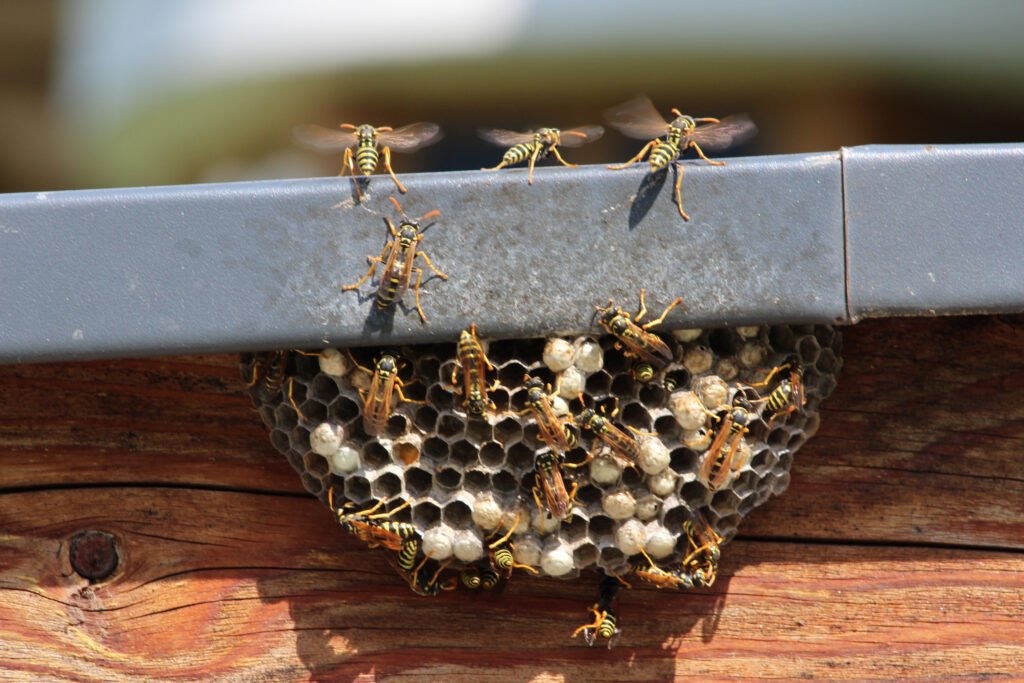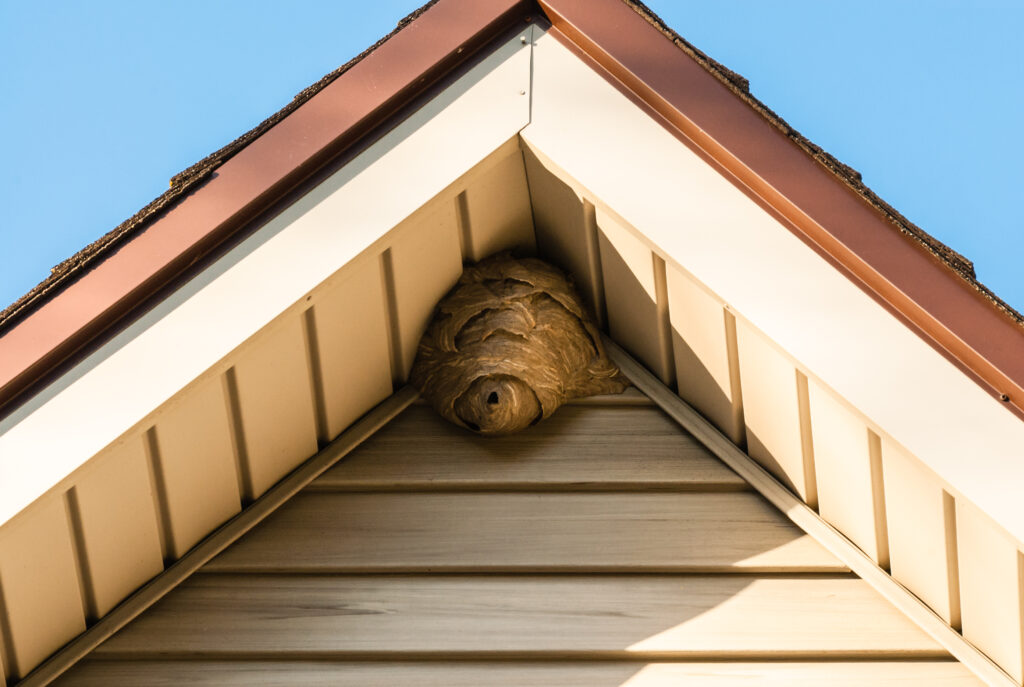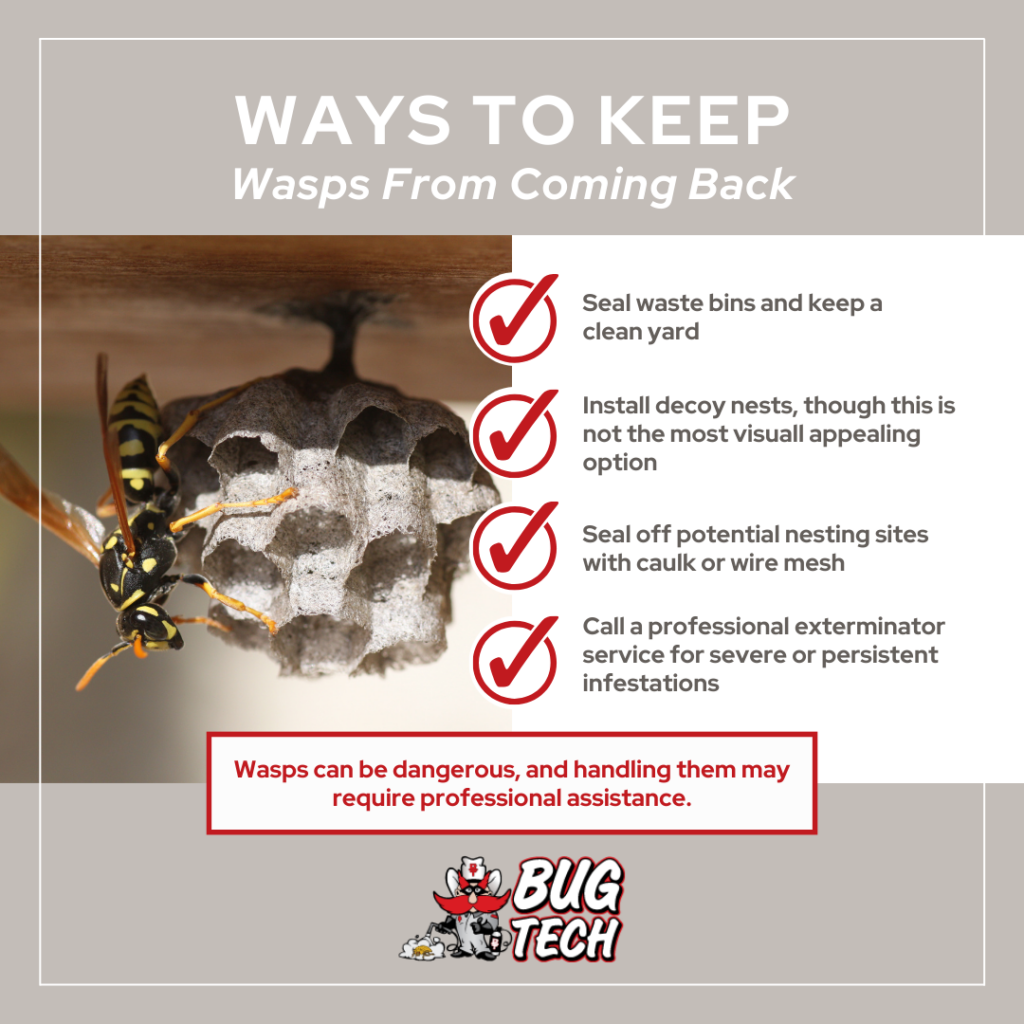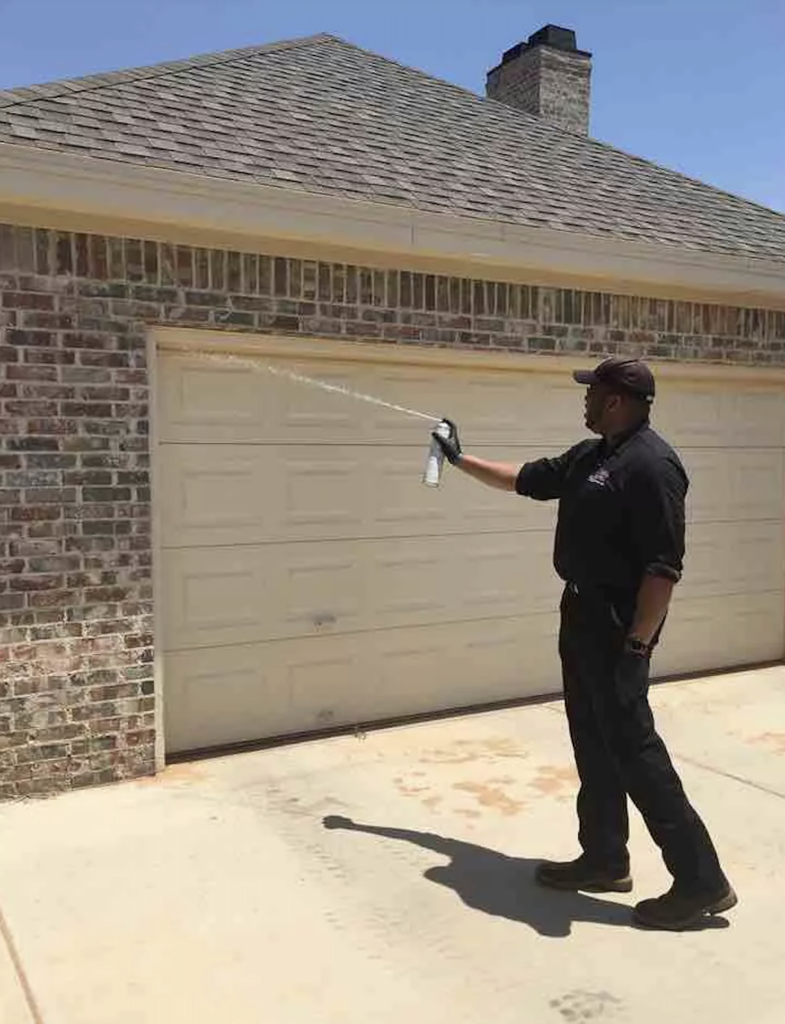Lone Star Stingers: A Guide to the Wasps in Texas

They say everything’s bigger in Texas, but fortunately, that doesn’t extend to every insect. Texas hosts numerous wasp species, each with its own distinct characteristics. However, irrespective of their size or type, an unexpected encounter with a wasp can result in painful stings and, in some cases, severe allergic reactions.
The first step towards effective wasp control is getting to know these insects. Understanding their types, their behavior, and their nests can make a difference in safe wasp treatment or botched DIY removal.
Common Wasps in Texas
1. Paper Wasps:
Also known as Polistes Carolina, paper wasps are found throughout the United States. These wasps are notable for their long legs, pinched waist, and range of colors, including brown, yellow, and red, as well as noticeable yellow markings. Paper wasps get their name from the unique nests they construct from chewed wood fiber or wood pulp. These nests mimic the feel of papier-mache, hence the name ‘paper wasp.’
2. Texas Yellow Jackets:
Yellow Jackets, with their distinctive yellow stripes against a black body, are very aggressive when it comes to defending their nests. Trash cans are their preferred nesting site, so take extra care when taking out the garbage.
3. Bald-Faced Hornets:
Despite the scary name, these large wasps are just a type of social wasp. They’re easily recognized due to their notable large size and black color marked with a ‘white face.’ Their nests, made from wood pulp, are often found hanging from trees or buildings.
4. Cicada Killer Wasps:
These wasps are solitary hunters, targeting cicadas specifically. Female cicada killers are responsible for hunting, and their large size helps them in this task. They dig underground tunnels to lay their eggs, burying a paralyzed cicada with each egg they deposit. The cicada provides a fresh meal for the hatchling when the egg hatches.
5. Mud Dauber Wasps:
As the name suggests, these solitary wasps use mud to create their nests, which often look like a string of misshapen pearls. Although typically black, some species may have yellow or green markings. Their most identifying feature is their ‘thread-waisted’ body, with a pinched section between the thorax and abdomen.
6. Cricket Hunter Wasps:
These are another solitary species of wasp, and as their name suggests, they hunt various types of crickets. The female wasp paralyzes the cricket, lays her egg on it, and seals it in a cell in the underground nest she has excavated.
Knowing what type of wasp you’re dealing with is the first step towards successfully addressing a wasp problem in the home or garden. So, now you know what is buzzing around you. But just spotting them isn’t enough. Let’s move on now to understand more about their characteristics and nesting habits – the key to implementing a successful extermination strategy.
Understanding Wasp Nests and Differences Among Species
Understanding the wasp nest you are dealing with can provide a significant advantage when it comes to treating it. Each species has distinctive nesting habits that can hint at the type of wasps you’re dealing with. Some prefer to be high up in trees, while others, like certain yellow jacket species, opt for the ground level or even underground tunnel networks. Texas particularly sees a large number of wasp nests in places such as porches, patios, and underneath roof lines.
Some nesting differences between common wasps in Texas include:
- Paper wasps create nests that resemble an upside-down umbrella with comb-like cells visible from the bottom.
- Mud dauber wasps make their nests from mud, and these nests typically look like tubes that are attached to the sides of buildings or other flat surfaces.
- Cicada killer nests are rarely visible. The eastern and western cicada killer females dig deep burrows in well-drained soil, which they pack with paralyzed cicadas for their soon-to-hatch offspring.
Besides the nesting differences, some wasp species are social insects while others lead solitary lives. Social wasps, such as the bald-faced hornet and paper wasps, live in large colonies with a queen and numerous workers. In contrast, solitary wasps, like the mud dauber and cicada killer, operate alone. Even within the same family, wasp species can exhibit considerable variance in size, color, and life cycle.
Dangers and Threats Posed by Wasps

Wasps aren’t just nuisance pests; they can be a danger, too. One of the most common concerns when encountering wasps is the potential for painful stings. Most social wasps and yellow jackets, for example, have smooth stingers that allow them to issue multiple stings in a short time. Even walking too close to a nest or accidentally disturbing a wasp can trigger defensive instincts, leading to unwelcome, painful stings.
But what makes a wasp sting hurt isn’t just the sting itself; it’s what comes with it. Wasp venom contains toxins that cause pain and can trigger allergic reactions in some people. While the vast majority of us will experience swelling, redness, and discomfort in the aftermath of a wasp sting, some aren’t so lucky. According to the American College of Allergy Asthma and Immunology, severe allergic reactions, medically termed anaphylaxis, can occur, which can be life-threatening if not treated immediately. Symptoms of anaphylactic shock include difficulty breathing, swelling of the face or throat, rapid pulse, and dizziness.
In these situations, the advice from trusted sources like Mount Sinai Hospital is straightforward: seek immediate medical attention. Even without a history of wasp allergies, monitoring the sting and your reaction closely is essential.
Even if the specific species of wasp you are dealing with are not known to be aggressive, their nest’s location can threaten humans. While many prefer to build nests in trees or the ground, they are often attracted to human-made structures that put them in direct contact with people. This proximity increases the likelihood of encounters and can pose a particular problem for those with allergies.
Dealing with wasps should not be taken lightly. Individual attempts to try and remove nests can result in multiple stings and a potential trip to the hospital.
Bug Tech’s Solution for Wasp Control

When it comes to wasp infestations, a DIY solution may not always be the best option, even with all the knowledge about these winged invaders. Wasp control requires caution, expertise, and the right equipment to remove their nests from your property safely.
At Bug Tech, we provide comprehensive pest control solutions to treat and prevent wasps from making a home on your property. Our first rule of thumb is sanitation and routine maintenance. Regularly taking out the trash, cleaning trash cans, sealing up cracks and crevices around your home, and checking for nests regularly can keep wasps from establishing themselves in the first place.
Also, managing vegetation around your property can reduce the site’s attractiveness to wasps seeking food or shelter. Bushes, shrubs, and trees need to be well-kept and trimmed regularly.

Moreover, we believe in Integrated Pest Management (IPM), an environmentally sensitive approach that combines biological, cultural, mechanical, and chemical controls. Our team performs a free inspection and analysis of the pests affecting your home, backyard, and neighborhood. Only after conducting a thorough inspection do we assign personalized treatment plans.
When we find a hive or a nest, we knock it down, ensuring the elimination of eggs, larvae, workers, and queens. Following the removal of the hive or nest, we will apply an insecticide at the base and around the place where the nest was. This prevents any wasps or bees that attempt to rebuild a colony.
The goal is to minimize potential hazards and use chemicals responsibly and strategically. We choose to control wasps in ways that maximize public and environmental safety.
In conclusion, if you’re facing a wasp problem, it’s crucial to remember the risks involved in trying to handle the problem yourself – painful stings, probable allergic reactions, and potential damage to your home from misplaced insecticide applications.
Instead of taking the risk, count on Bug Tech. We have the expertise, skills, and equipment needed to handle wasp control safely and effectively.
